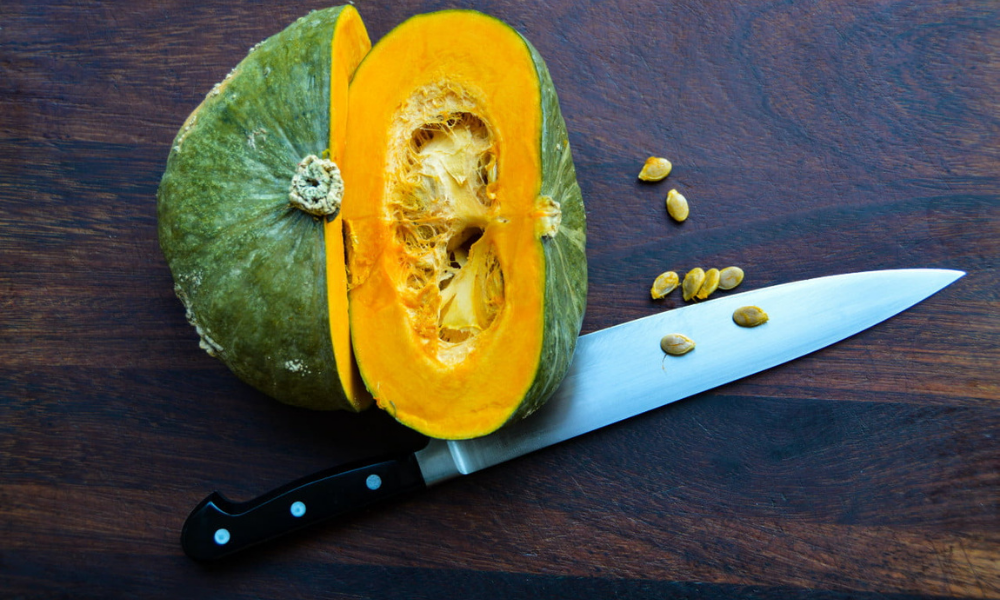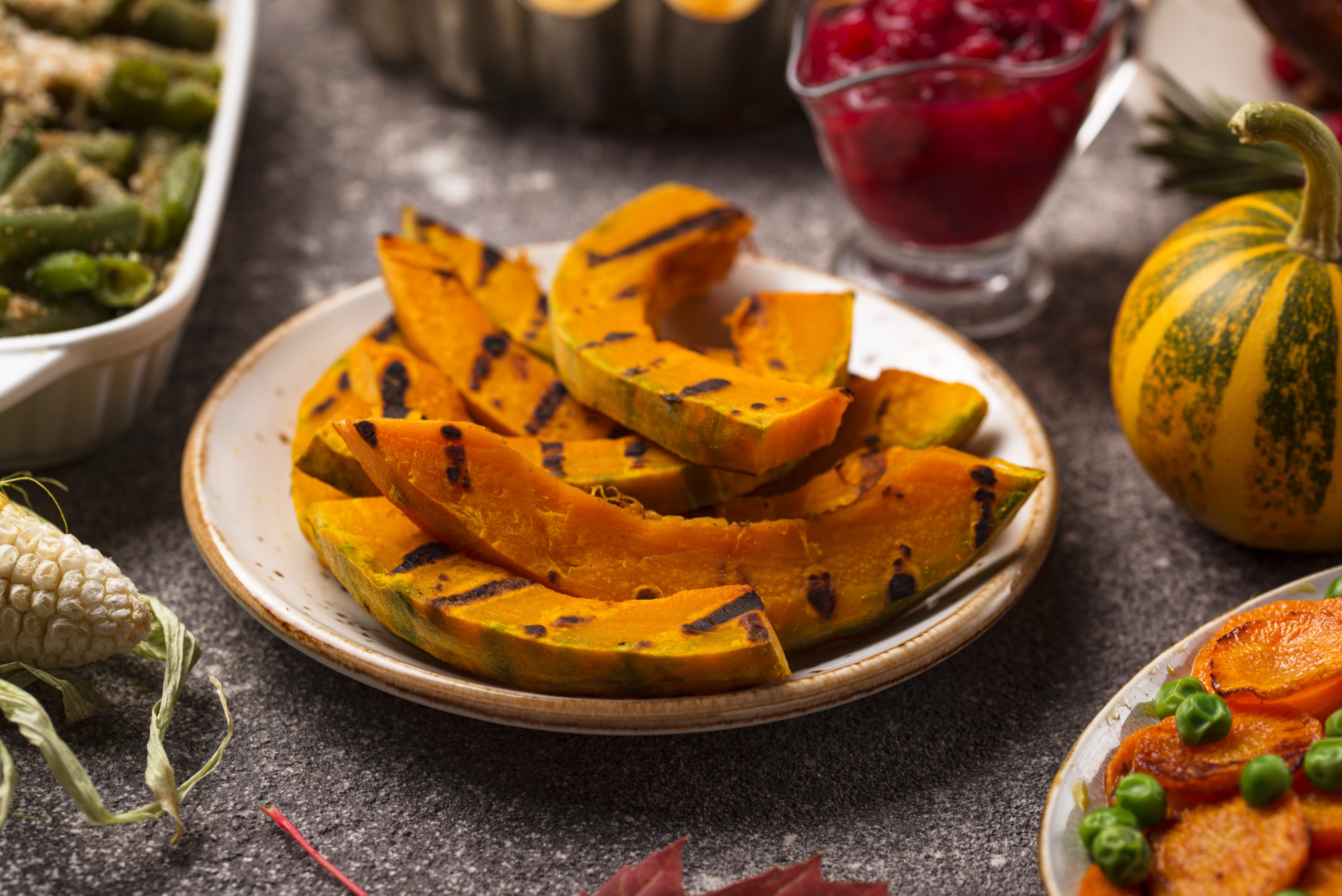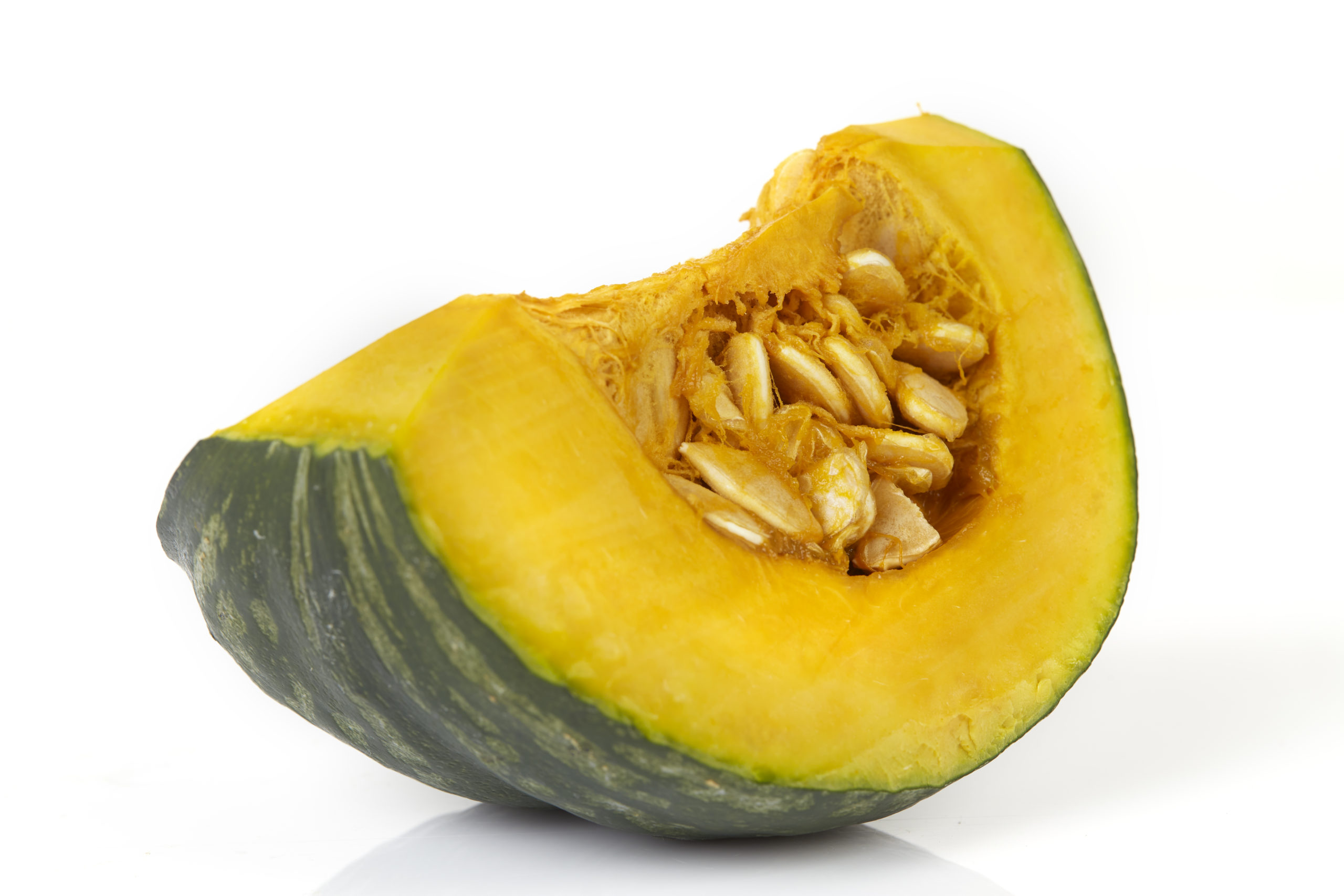Kabocha squash is a common ingredient in Japanese cooking. You may have had it dipped in tempura batter and fried in restaurants or slow-cooked in hot pots or soups. While this winter squash resembles a short, stocky cousin of the pumpkin, it has a sweet potato-like flavor and texture. The rugged, deep-green skin gives way to soft, reddish-yellow flesh on the interior. In addition to its delectable flavor, kabocha squash has many health benefits. The rich orange flesh of kabocha, like pumpkin, is firm in the antioxidant beta-carotene, which translates to vision-protecting Vitamin A, and the skin is also a good source of fiber.
Furthermore, adding kabocha squash to any recipe enhances the sweetness without adding additional sugar. You’ve probably heard of squash, but you’ve probably never heard of kabocha squash. So, what exactly is the kabocha squash? Kabocha squash is a hard-shelled winter squash with orange flesh. All winter squash must be cooked, whether steamed, boiled, roasted, sautéed, or even microwaved, unlike summer squash. The Japanese pumpkin is another name for it. Kabocha is a must-have in any Japanese eatery. It has a buttery flavor and a silky texture. In vegetable tempura, it’s frequently battered and fried.
What is Kabocha Squash?
Kabocha squash is a dark green squash with a spherical shape. It’s a winter squash picked in late summer or early autumn, and it has orange flesh and a firm rind. Kabocha, also known as Japanese pumpkin, is a popular Japanese dish grown worldwide, notably in South Africa, Thailand, and California.
Kabocha squash is a common ingredient in Japanese cooking. You may have had it dipped in tempura batter and fried in restaurants or slow-cooked in hot pots or soups. While this winter squash resembles a short, stocky cousin of the pumpkin, it has a sweet potato-like flavor and texture. The rugged, deep-green skin gives way to soft, reddish-yellow flesh on the interior.
In addition to its delectable flavor, kabocha squash has many health benefits. The brilliant orange flesh of kabocha, like pumpkin, is firm in the antioxidant beta-carotene, which converts to vision-protecting Vitamin A. The skin is a good source of fiber as well. Furthermore, adding kabocha squash to any recipe enhances the sweetness without adding additional sugar.
How to Cook with Kabocha Squash?
Cut it half lengthwise using a sharp knife to break down kabocha squash. These suckers, like butternut or acorn squash, can be challenging to cut. Scoop out the pulp and seeds (which you should roast like pumpkin seeds), then cut into wedges. Kabocha squash can be eaten whole, although the skin can be removed with a knife.
Kabocha squash can be used in various savory and sweet dishes and cooked in various ways. In recipes, try substituting it for pumpkin, butternut squash, or acorn squash. To help you get started, we’ve compiled a list of the best kabocha squash recipes.
1. Roast It
To create our Roasted Kabocha and Kale Salad, toss kabocha squash with olive oil, salt, pepper, and spices and bake until tender. As seen in Quinoa Stuffed Squash, Kabocha halves make excellent receptacles for roasting tasty contents.
2. Simmer It
Kabocha takes on a new dimension of flavor when cooked gently in a fragrant broth, curry, or stew. Try the Winter Squash and Tofu Panang Curry for yourself.
3. Puree it
Kabocha Squash Puree is a quick side dish to serve alongside roasted chicken or pork tenderloin. Cooked cubes can also be added to Coconut-Red Curry Squash Soup in a food processor to give it more body.
4. Bake it
As evidenced by our decadent spin on the classic gratin, Pumpkin Poblano Casserole, kabocha, and cheese are a match made in heaven.
5. Grate it
To add flavor and texture to cakes, muffins, pieces of bread, and sweets, grate raw kabocha with a box grater. If you like carrot cake with grated carrots, our Chocolate-Swirled Pumpkin Bundt is a must-try.
How to Buy Kabocha Squash?
While kabocha squash is accessible all year, its entire season is late summer to early fall. It’s available at Whole Foods, Trader Joe’s, your local Asian grocer, and farmers’ markets. Color and weight are the two most crucial variables to consider while choosing the perfect kabocha squash. It should feel heavier than imagined when lifted, and the skin should be a rich, deep green. Golden speckles and streaks also indicate ripeness on the exterior.
2 Ways to Select and Buy Kabocha Squash
When Kabocha squash is in season, you can get it in many Asian shops and grocery stores and at your local farmers’ market. There are two primary traits to look for in kabocha squash, which can weigh anywhere from one to eight pounds:
Color
Dark green skin with bright green stripes and golden speckles characterizes the ideal kabocha squash. When the squash is at its height, the flesh should be a deep blood-orange color when carved into it.
Density
Please take a good look at the kabocha and feel it in your hands. You want a firm squash with no squishy patches, and it should be weighty to the touch, indicating that the pulp is thick, dense, and fully ripe.
What are the Culinary Uses of Kabocha Squash?
Kabocha has become a popular ingredient in various countries due to its migration from South America to Asia. Depending on where you go, it’s prepared differently.
Japan
In Japan, kabocha is frequently tempura-fried alongside other vegetables. Miso (soybean paste) is another popular way to prepare kabocha in Japanese cuisine, either before or during cooking.
Thailand
Kabocha is frequently used in Thai curries, either as a purée to thicken the base or broken into chunks. It’s also a common element in desserts, particularly custards.
Korea
Habakkuk (squash soup) is a popular Korean dish. This pumpkin porridge is made with puréed boiling kabocha squash and rice.
How to Prepare Kabocha Squash?
Kabocha is a versatile squash that may be utilized in various dishes, from savory soups to sweet sweets. Because it has less water than other squash, kabocha is easier to cook with oils and prepare in various ways.
1. Baked
Kobocha’s thick consistency lends itself perfectly to baking, especially in desserts like pumpkin pie or muffins. Try an oven-baked kabocha gratin with breadcrumbs and cheese for a savory dinner.
2. Pureed
Kobocha’s thick consistency lends itself perfectly to baking, particularly in desserts like pumpkin pie or muffins. Baked kabocha gratin with breadcrumbs and cheese makes a delicious meal.
3. Seeds
Kabocha seeds, like pumpkin seeds, are a tasty snack. Remove the seeds’ pulp, dry them, and sprinkle with olive oil and kosher salt. Bake for 45 minutes on a cookie sheet.
4. Simmer in Favors
Kabocha absorbs other ingredients quickly because of its low water content. Add kabocha cubes to recipes with flavorful liquids that the kabocha will absorb, such as stews and curries.
5. Roasted Kabocha Squash
The squash flavors are enhanced when roasted in the oven because the squash’s small amount of water evaporates when heated, increasing the nutty flavor of kabocha.
Conclusion
When deciding if kabocha squash is terrible, don’t waste time figuring out whether it’s too soft. It will need to be cooked to make it edible. Kabocha squash is also high in beta carotene and other nutrients, so eating it immediately is beneficial. Kabocha squash is less than half the carbohydrates of other winter squashes. You can recognize a kabocha by squat, bumpy, and dull skin. Look for no soft spots, and it’s probably a bad one. Butternut squash is usually easy to spot. A bad one will have slimy liquid and moist flesh or a moldy, smelly interior. You’re on the right track if you can spot a few of these signs. Otherwise, it’s best to pass. But it’s a great way to tell if kabocha squash is wrong before you buy it.
A few ways to tell if a kabocha squash is wrong to include avoiding squash with mold or a soft rind. It would help if you also looked for a firm, slightly heavy shell. A mushy or moldy squash will have a foul odor. If it has these signs, it’s best to discard them. It also should be free of stringy seeds, which are perfectly normal. When buying kabocha squash, check the rind for signs of spoilage. The outer skin should be challenging and coarse, preserving the flavor and keeping the kabocha from going bad. The flesh should be bright orange-yellow, and the rind should be firm and dull. Kabocha squash will last up to a month if stored properly. However, after cooking, keep it refrigerated.


